How To Reduce Inventories In A Balanced Manner
You might be asking yourself, “Why is reducing inventory and working capital so critical?” It’s simple. As the global market dynamics shift, maintaining high inventories can lock up precious capital, hinder agility, and increase costs.
But here’s the catch: while many companies understand the importance of optimization, they find themselves trapped in a web of challenges.
Often, it’s a combination of external pressures like material shortages and escalating logistics costs. But sometimes, it’s internal: a lack of clear strategy, misaligned supply chain footprints, or even hesitant management. Recognizing these obstacles is your first step.
In this article, we take a closer look at how you can reduce your inventory without sacrificing service levels. First, let’s look at a couple of typical scenarios, we see as typical drivers for overstocking your inventories.
6 Typical Supply Chain Situations and How to Handle Them
Situation 1: Navigating External Pressures
You’ve experienced significant growth, and while that’s commendable, it’s also brought materials shortages, challenges in freight and logistics, and fluctuating raw material prices.
Suddenly, your inventories are ballooning, and costs are mounting, and you are longing for a better and less stressful balance.
Start by reevaluating your supply chain’s foundation. It’s time to finetune your stocking strategies to match the current landscape, so you’ll have less fires to put out, and more focus on the running the supply chain smoothly.
Situation 2: Addressing the Dips in Sales
It’s a hard pill to swallow, but sales are on the decline. Instead of resorting to panic, this is an opportunity to recalibrate.
It’s essential to realign your supply chain to the current demand, consider liquidating excess stock strategically, and enhance your sales forecasts – even when it means lowing expectations. Being adaptable and responsive will help cushion the impact.
Situation 3: Realignment of the Supply Chain Footprint
When your supply chain footprint doesn’t resonate with the demand, inefficiencies creep in.
The remedy lies in a thorough analysis. Try to determine where the demand is robust and shift your operations accordingly, and although this is easier said than done, when you succeed, it will ensure a much more harmonious supply-demand and stocking balance.
Situation 4: Regaining Control in Chaos
A ship without a captain is destined to drift. Similarly, a lack of control in your supply chain can lead to rampant inventory mismanagement.
The only solution is to take back control. While regaining control does indeed take a lot of effort and hard work, incorporating robust inventory management systems, establishing defined protocols, and training your team will win the game. By regaining control, you’ll instill order and precision in your operations.
Situation 5: Bridging the Strategy Gap
An abundance of inventory doesn’t always translate to efficiency, especially when it’s the wrong stock. This misalignment often stems from a disconnect between your sales and stocking strategy. Compromise is the way forward.
Refocus on strategic customers, understand their needs, and prioritize high service level items in order to bridge the strategic gab. This exercise often stalls in the pretty PowerPoints, so your job is to make the new strategy live in the supply chain planning organization both in technical and tangible terms, and in the people working alongside you – which brings us to the last situation.
Situation 6: Streamlining Planning and Gaining Support
Setting service levels is one thing, but inconsistent execution and a lack of management backing can spoil even the best plans.
It’s a precarious situation, but not impossible. Rally your team, gather management support, and invest in refining your planning behavior. Ensuring alignment across the board will pave the way for a more cohesive and effective supply chain.
Remember, while these situations can be daunting, identifying and understanding them is half the battle. It’s really in the next section, the magic happens – when you start getting your hands dirty.
It’s only when you've taken this deep dive, analyzed every facet, and have a 360-degree view, that you're in a prime position to make informed, strategic decisions.
How to Get Started Optimizing Your Inventories and Working Capital?
To get started with your inventory and working capital optimization, we recommend following the four distinct stages. While four stages sounds simple, of cause executing them is another story.
Stage 1: Dive Deep Into Your Company’s Current State
First, take a comprehensive look inward. Delving into the intricacies of your company’s operations is the foundational step to optimization.
Understand the dynamics, the internal workflows, and the external pressures that impact your inventory management.
Are you fully aware of the rhythms of your business?
Have you charted out your peak seasons, discerned the fluctuating product demands, and grasped the core expectations of your stakeholders?
It’s only when you’ve taken this deep dive, analyzed every facet, and have a 360-degree view, that you’re in a prime position to make informed, strategic decisions.
Stage 2: Pinpoint and Address Internal Obstacles
Transformation isn’t just about ambition; it’s also about introspection. Every organization has its share of internal barriers that can impede progress.
Do you have departments resistant to change, hesitant to move out of their comfort zones?
Are there silos that prevent seamless communication and information flow?
By taking the time to identify these challenges and addressing them head-on, you clear the path for true transformation.
It’s essential to break down these walls, nurture open channels of communication, and ensure alignment across all levels. Only by bridging gaps can you create a cohesive, efficient operational flow that will gain support from all stakeholders within your organization and supply chain planning team.
Stage 3: Securing the Right Support
Embracing change, especially one as significant as overhauling inventory management, requires solid support from the top executives. And acquiring this support isn’t just about presenting a business case; it’s about making it compelling, evidence-based, and forward-looking.
When you decide to move forward make sure to build the business case. Highlight the long-term benefits, the potential cost savings, and the strategic advantages that come with streamlined inventory management. Be transparent about the challenges, but also optimistic about the opportunities.
With this level of buy-in, your ambitions go beyond temporary adjustments. You’re creating a more profound, transformative change that benefits the entire organization.
Stage 4: Monitor, Adapt, Persist
Embarking on the journey to balanced inventory doesn’t mean you’re on a straight, unerring path. Quite the contrary. Expect twists and turns, occasional roadblocks, and unforeseen challenges.
It’s your commitment to the process, your relentless drive to monitor outcomes, analyze results, and tweak strategies as and when needed, that determines your success together with keeping your team aligned all the time.
Embrace agility, be open to course corrections, and display an unwavering persistence when you face setbacks. By doing so, not only do you ensure a streamlined supply chain, but you also lay the groundwork for a business that’s resilient, adaptable, and set for long-term growth.
Summary
In the rapidly evolving world of the 2020s, it’s clear: inventories and working capital matter. You’ve seen how different supply chain situations, both external and internal, can sway your business.
Each scenario demands its unique strategy, its tailored approach. You’ve gained insights into the methods to initiate a transformative journey, understanding the importance of introspection, garnering support, and continuously adapting.
The road might be challenging, but the rewards? Immense.












